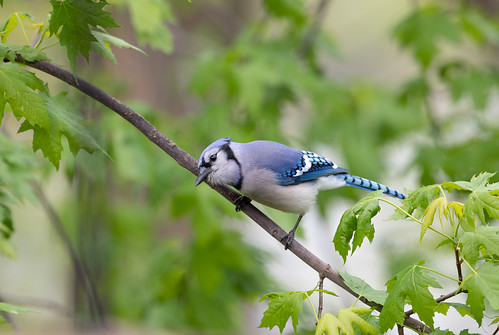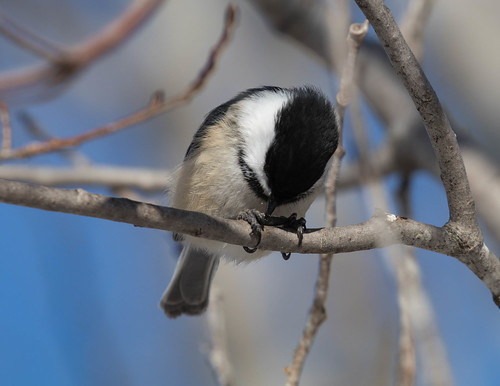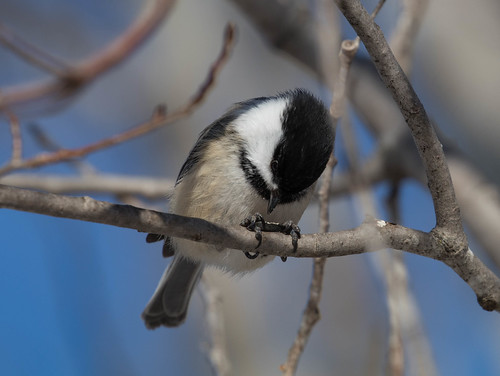My little grandson Walter loves watching chickadees fly into his bird feeder, select one sunflower seed, and carry it off to eat in a tree. This week when he was at my house, we watched chickadees doing exactly that, coming and going from my big tray feeder even as the whole while, two Mourning Doves sat in the feeder eating seed after seed right there. He liked learning that some birds eat seeds in the feeder while some eat them somewhere else.
Sunflower seeds are exactly the same no matter who is eating them. The shell is not digestible—it’s the seed within that has all the nutrition. Different kinds of birds have entirely different approaches to how they extract that nutrition.
Pigeons and doves swallow sunflower seeds whole, leaving it to their powerful, grit-filled gizzard to pulverize both the shell and inner seed before they reach the intestines, where the nourishing elements are extracted and enter the birds’ bloodstream and the rest get pooped out. Doves are big and tasty, and every moment they spend in the open eating seeds, they’re vulnerable to predators. So when they come down to eat, they pig out, filling not just their large stomach but also a large, expandable pouch in their esophagus called the crop. When fully stuffed, they fly to a safe place to roost—it’s there that they digest their meal.
It’s easy to watch them swallowing the seeds whole, and if we’re lucky enough to spot a branch where they’re roosting, whether we realize it or not, we’re seeing them digest their latest meal. Pigeons and doves may visit our feeders any time of day, but they visit their favorite feeding station the two times of day when a big meal is most critical: at dusk, before they go to sleep—that bedtime meal keeps their metabolic furnace burning all night as they digest—and first thing in the morning, breakfast being the most important meal of the day for birds, when their stomachs are empty.
With their large crop and relatively large body size, swallowing a large quantity of whole seeds isn’t a problem for pigeons and doves. Smaller seed-eating birds such as sparrows, finches, cardinals, and grosbeaks are just as vulnerable as doves out in the open, but being smaller, they can't afford to waste valuable space in their stomach and crop with indigestible seed shells, so they have special adaptations to extract the inner seeds quickly and efficiently.
When one of these birds picks up a seed, its thick, muscular tongue instantly maneuvers it into a notch near the base of the thick, conical beak, which immediately cracks the seed open. In one quick movement, the muscular tongue pulls the inner seed into the mouth to swallow as the shell pieces drop to the ground and the bird grabs another seed. We can watch this firsthand with binoculars when a sparrow, finch, or grosbeak is eating at the feeder. Like doves and pigeons, sparrows, finches, and grosbeaks have a sturdy, well-developed gizzard to grind the inner seeds into a liquid before emptying the soupy meal into the intestines.
Considering how many sunflower seeds my local Blue Jays consume, it’s funny for me to realize that they do not innately recognize sunflower seeds as food. They must watch other birds, especially other Blue Jays, opening and eating them to figure this out. During my rehab days, one baby Blue Jay I called Lugwig collected sunflower seeds as toys, keeping them in a little cup with his buttons, a shiny broken watch, and other tiny trinkets. One day when I was sure he was watching, I cracked open a sunflower seed with my teeth and gave him the white inner seed. He recognized that because he’d already been eating sunflower hearts, and this discovery that he could get a delicious morsel from cracking open those blackish toys delighted him.
This was before I had children. My son Joey found some Starburst candies in his trick-or-treat pumpkin on his first Halloween. Thanks to the colorful wrappers that made each piece look like a tiny birthday present, he started calling Starbursts “present candy,” instantly bringing back memories of Ludwig’s delight opening tiny sunflower “wrappers” for the delicious “present” within.
Jays are generalists with an omnivorous diet, their bill not specialized to open sunflower seeds and their gizzard not developed to grind the shell away. So to open their “present candy,” they hold the seed in their feet and hammer it open with their bill. That takes time and effort. My trail cam once made a 30-second video of a Blue Jay laboriously opening a seed only for another to grab the inner seed right out of its mouth.
Jays passing through our neighborhood, or local jays who want a quick sit-down meal, eat like this in our feeders. But many times, a Blue Jay seems to swallow a dozen or more seeds whole and then flies away. This is a neighborhood jay who uses the feeder as a grocery store. Blue Jays pop as many seeds as they can fit into a pouch in their throat, and carry them off to hide in a cache where they will find them to eat another day.
Like jays, chickadees are generalists who hold each sunflower seed in their feet as they hammer the shell. But chickadees, with their much tinier bill, don’t have to take off the whole shell before eating the sunflower heart. They peck a small hole into the shell and pick out and swallow tiny bits of the heart even as they’re enlarging the hole to eat more of the seed. If anything scares a chickadee off when it’s not done eating a sunflower seed, it at least won’t fly away empty-tummied.
It's almost impossible to see chickadees eat at our feeders because unlike most seed eaters, chickadees don’t sit in the feeders to eat—they take turns grabbing and flying off with a single seed to hide for later or to eat in a more protected spot. As a rehabber, I had the great privilege to watch chickadees eating sunflower seeds just inches away. I no longer rehab birds, but I can still watch chickadees eating when one flits from the feeder to a branch near my window.
Ever since I started birding in 1975, I've been very focused on what they do, up close and personal. Their behaviors in and near our feeders are the easiest behaviors to observe closely. I'm so glad that now I get to share this all with my little grandson.












